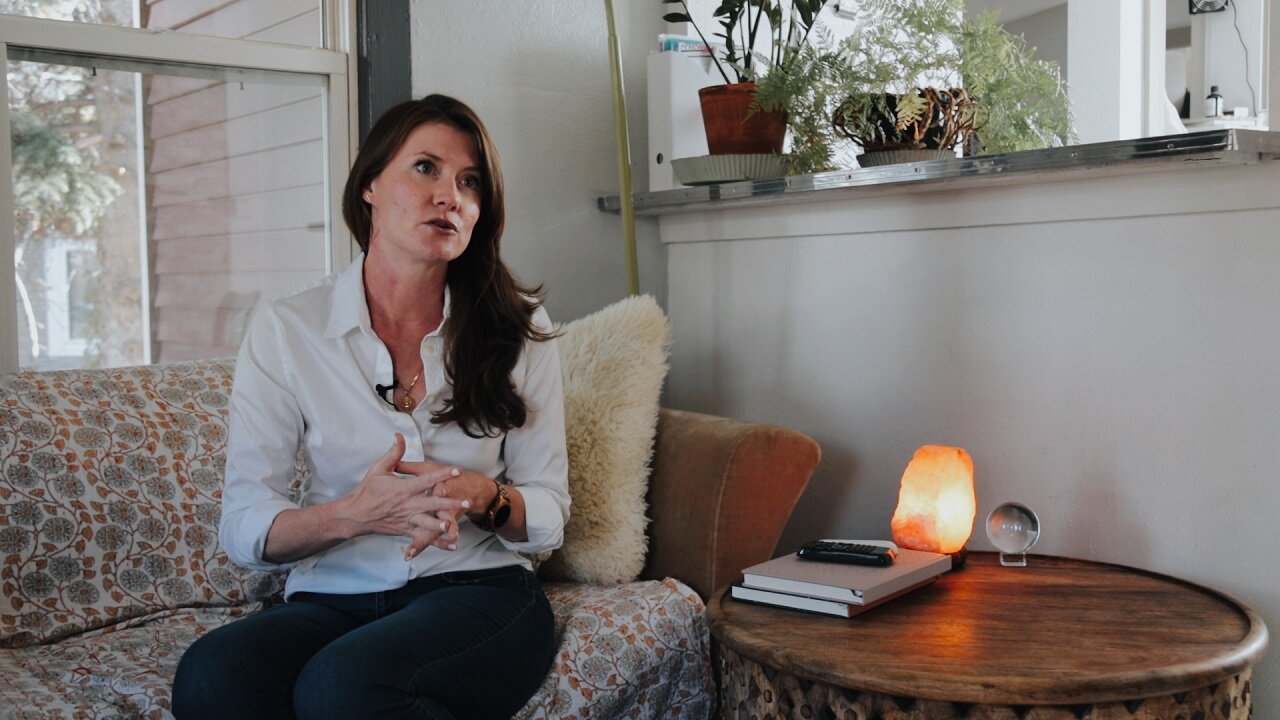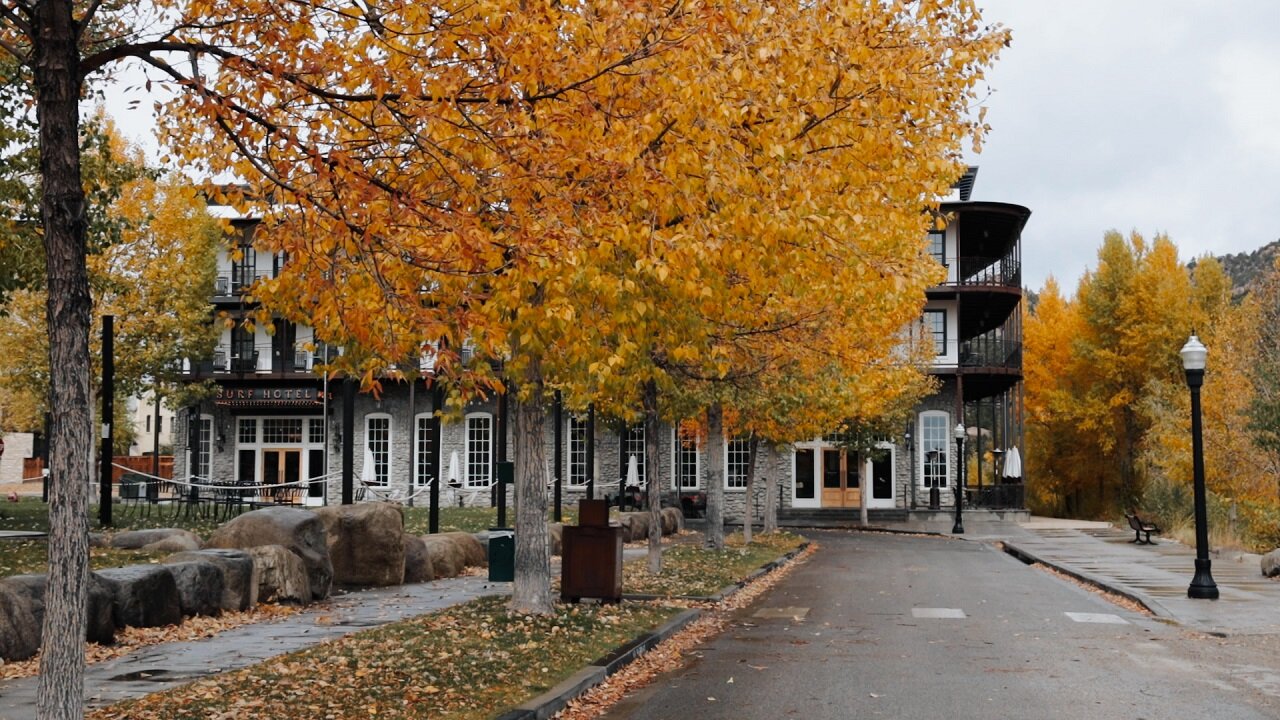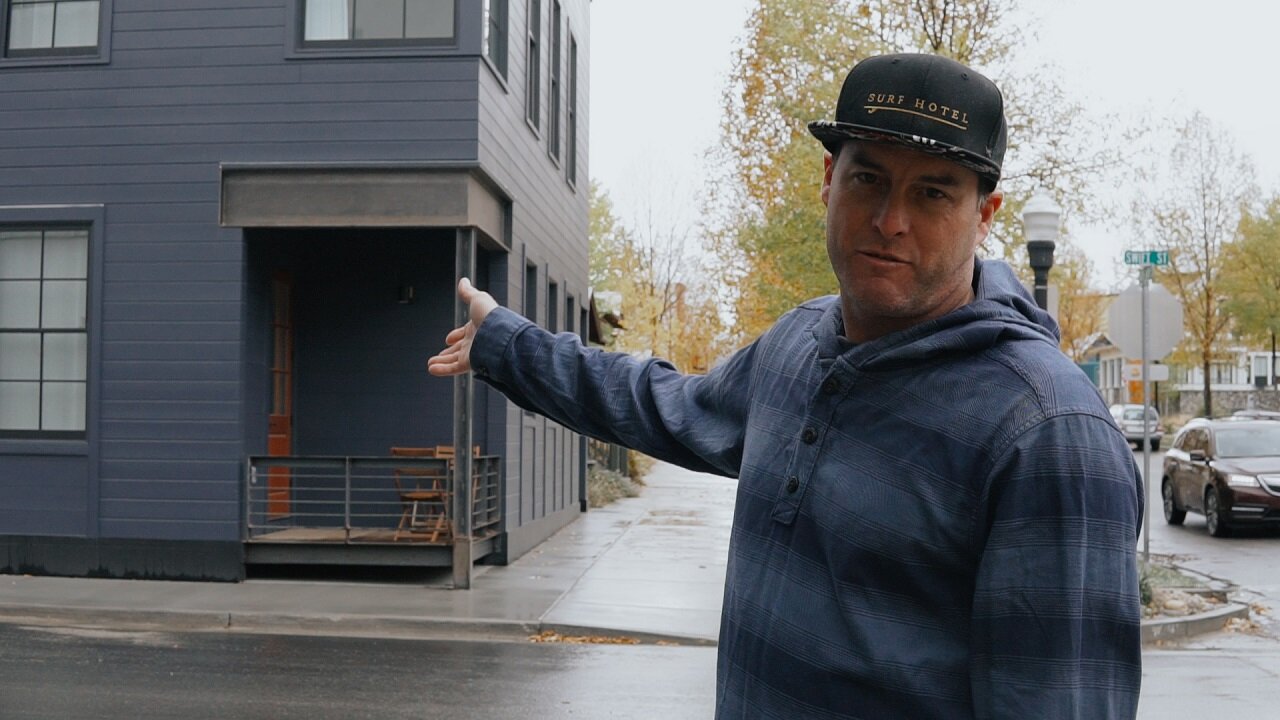Homeless for 9 months with a budget of $1,800, Buena Vista resident navigates the housing crisis

This story is part of an ongoing series about the mountain town housing crisis in Colorado. You can hear more voices in the middle of this crisis on Thursday, December 16 when Rocky Mountain PBS airs "Colorado Voices: Mountain Town Housing Crisis" at 7 p.m.
BUENA VISTA, Colo. — Nestled in the Upper Arkansas River Valley, Buena Vista has long been a destination for outdoor activities, weddings and tourism in general. The town of just under 3,000 people has seen rapid change over the last 10 years and an even quicker arrival of a housing crisis.
“Every day, I'm at least partially consumed with the thought that I might lose my current housing,” said Catherine Eichel, a five-year resident of the Arkansas Valley. “It's the last thing I think about before I go to sleep. And it's the first thing I think about when I wake up.”
Eichel is a professional wedding photographer and has found success in the area, a popular place for weddings. But in the last year, she lost her housing and more than struggled to find a new place to live.
“So, I was actually homeless during that nine months and working full time, which was incredibly challenging,” said Eichel.
For nine months, Eichel was piecing together housing in any way she could—she stayed on friend’s couches, sublet and lived with relatives. The extra challenge was, of course, navigating this problem during a global pandemic when people were encouraged to stay separated for public health reasons.
Related Stories
“During the time that I couldn't find housing for nine months, I think the biggest, the most overwhelming feeling was, of course, massive levels of anxiety, but then coupled with that was just severe isolation,” Eichel explained. “It impacts my emotional health to a huge degree, pretty much all of the time and my friends that are in similar situations, I know that this is their perspective too.”
Her story captures the essence of the housing crisis Buena Vista has seen in the last couple of years.
“I've had many friends here lose their housing and have to leave and move somewhere else because they don't have a place to live,” said Devin Rowe, a member of the Board of Trustees for Buena Vista. He also works at a local bike shop that doubles as a bar to help make ends meet.
“It has gotten to a point where people, you know, like me, who work in the service industry, can't just work one job and afford a house,” said Rowe. He said he is currently living in a studio apartment that is only 200 square feet. Before that, he was living in Leadville and driving half an hour to work in Buena Vista every day.
A search on Zillow for the average home price in the Buena Vista currently shows it a little more than $460,000, while data from the National Association of Relators shows in Chaffee County shows it just over $410,000. Eichel said she has watched housing prices closely and sees it averaging over half a million dollars. For many in the area, even that median price is far too expensive.
The Bureau of Economic Analysis, which analyzed and collected 2020 census data, shows the median individual income in Chaffee County is just over $30,000 a year, while household median income in 2019 was $60,331.

“So you can see there's a pretty big gap between what the normal person like myself makes here and what our homes are selling for in the valley,” said Eichel.
This huge gap between income and housing prices is why Eichel and Rowe have heard of so many people and friends leaving the area.
“It's becoming more and more common where people are getting pushed out because of housing, whether it's being sold or being rented out as short-term rentals,” said Rowe.
Short-term rentals (STRs) have become a big target of blame for the housing crisis in Colorado mountain towns like Buena Vista. STRs often take up a significant portion of the housing units for an area.
In late September, the Board of Trustees adopted an ordinance that limits the number of STRs for the town, with some exceptions. It puts a cap on out-of-county owners to only own six percent of the housing stock and in-county owners to three percent. Owners are exempted from this rule if the property is their primary residence and/or if the property is in the east or South Main areas of town.

“In the last year we've really worked on short term rentals, which is a really hard subject because people want to make money on their property and, we get that, but it's also been steadily becoming a higher and higher percentage of our housing stock,” said Rowe.
Eichel spoke at that board meeting in late September about the ordinance and encouraged the town and county to organize a more complete set of data on housing in the area, including information like how many housing units are available, how many are being used for STRs and how many are needed to house the town’s workers.
“I'm hopeful that a cap might be helpful as far as maybe then making it not as desirable a place for out-of-town investors to come and buy in our town,” explained Eichel. “So that way maybe at some point housing values will level out or maybe even come down. So people in my income bracket can then afford to buy here locally.”
Eichel eventually found a place to rent—not buy—but said the future remains uncertain.
Buena Vista's downtown area has changed dramatically over the last decade and a half. The main street still holds to its roots but a newer area of town called South Main has altered the energy and appeal of the area.
“Does anyone see me as the bad guy? ... I mean, yes. Certainly, lots of... there are people that do,” said Jed Selby. He is the co-founder and president of South Main, a development and construction company that built the South Main area of town.

With new homes, a boutique hotel, a park, and new shops, the land Selby is developing—the former location of the town dump—appears more modern and swanky. Eichel and Rowe admit that while there has been some controversy about South Main, it has brought a lot of life to the area.
“It's really amazing the different buildings and businesses and music and food that they've been able to inject into this area,” said Rowe.
Selby first started building South Main in 2003 after searching for a place near a river, and as a former professional kayaker, that part was essential to his plan. He graduated from Fort Lewis College in Durango and fell in love with the Colorado scenery.
“We knew we wanted to build a sort of a downtown area. We didn't really know exactly what that meant. So we started researching other downtowns that we really liked in the state,” explained Selby.
In the span of 18 years, Selby and his partners have built up the area of town, which includes the Surf Hotel and some STRs, all owned by Selby and his partners. He said his company is "vertically integrated."
“So, we have built and we own and operate a lot of workforce housing. We also, you know, we're in the hospitality section, we're in food and beverage, and as we're building the whole neighborhood, we can sort of expand into areas where the market is needed,” explained Selby.
As a man who builds a lot of property in Buena Vista and even has a second home in Mexico, Selby said his biggest complaint for lack of affordable housing is the red tape a builder must go through to get a project done.
“Things take very far too long to permit. The process is very cumbersome, which drives up expenses and it delays the timeline,” Selby said. “So fundamentally speaking, we can't build things fast enough. And the town is growing. Colorado is growing as a whole.”
Selby admits STR owners like himself are putting a dent in available housing for full-time residents. However, he does not believe capping or limiting STRs will be the answer.

Currently, the success of vacation rentals is partially due to the fact owners are able to essentially operate a hotel without the cost of what it takes to run a hotel. For example, STR owners pat residential property taxes as opposed to commercial property taxes (the latter are much higher).
This is a sticking point that hasn’t gone unnoticed. A group of Colorado lawmakers are proposing a state bill for the next legislative session to increase STR taxes three-fold.
“In Colorado, commercial property taxes are almost four times the amount of residential tax,” Selby explained. “As soon as you're running your hotel out of a house, you have much lower expenses. You have lower property taxes, you have a residential loan instead, a commercial loan, which is longer term, has lower rates.”
Selby continued to point out more differences like being able to hire contract employees as opposed to needing full-time staff with employee benefits.
“One idea that I'd had, you know, years ago was just, if you were to, say, take the amount of additional tax that you would be paying for property tax or whatever it might be, if you were considered a business and you were to take that…that difference and fund a housing authority, or fund affordable housing,” said Selby.
He also worries about the change in the community if legislation makes it more difficult to own a vacation rental. He said the way many young people or young families can afford to buy a house in the area is to make money off it as a STR. Otherwise, he said the only people who could afford the current housing prices would be older people who gathered more wealth over time.

As Selby walked down the South Main area of town, he proudly pointed out the various types of buildings and houses right next to each other, like a tiny home just a few doors down from a 2,500 square-foot home. He said his company has a lot of projects in the pipeline to create more housing for workers; right now, Selby's company has about 26 units for its workers. He hopes the part of town that he helped create and will continue to grow will be a place that will last.
“I think that our goal is that when people come down here 10 years, 20 years, 50 years, a hundred years from now, they love it and it's beautiful and they enjoy it,” said Selby.
Eichel talked about a similar goal for the town—longevity. She loves the friendly atmosphere and interacting with others in town. Her hope is that people see this housing crisis as a caution sign and make changes now while there is still time to save the heart of the community.
“I would hope that people with single incomes are able to continue to move here. I would hope that people who have kids, they're able to come back here and afford to buy a home here. So that we can continue to keep this a real authentic small mountain town. And it doesn't become one of these modern ghost towns,” said Eichel. “We want you to come and visit here, but we also need to be able to build a life and our dreams for ourselves here as well."
Amanda Horvath is a multimedia producer with Rocky Mountain PBS. You can email her at amandahorvath@rmpbs.org.
Alexis Kikoen is a multimedia journalist at Rocky Mountain PBS. You can reach her at alexiskikoen@rmpbs.org.